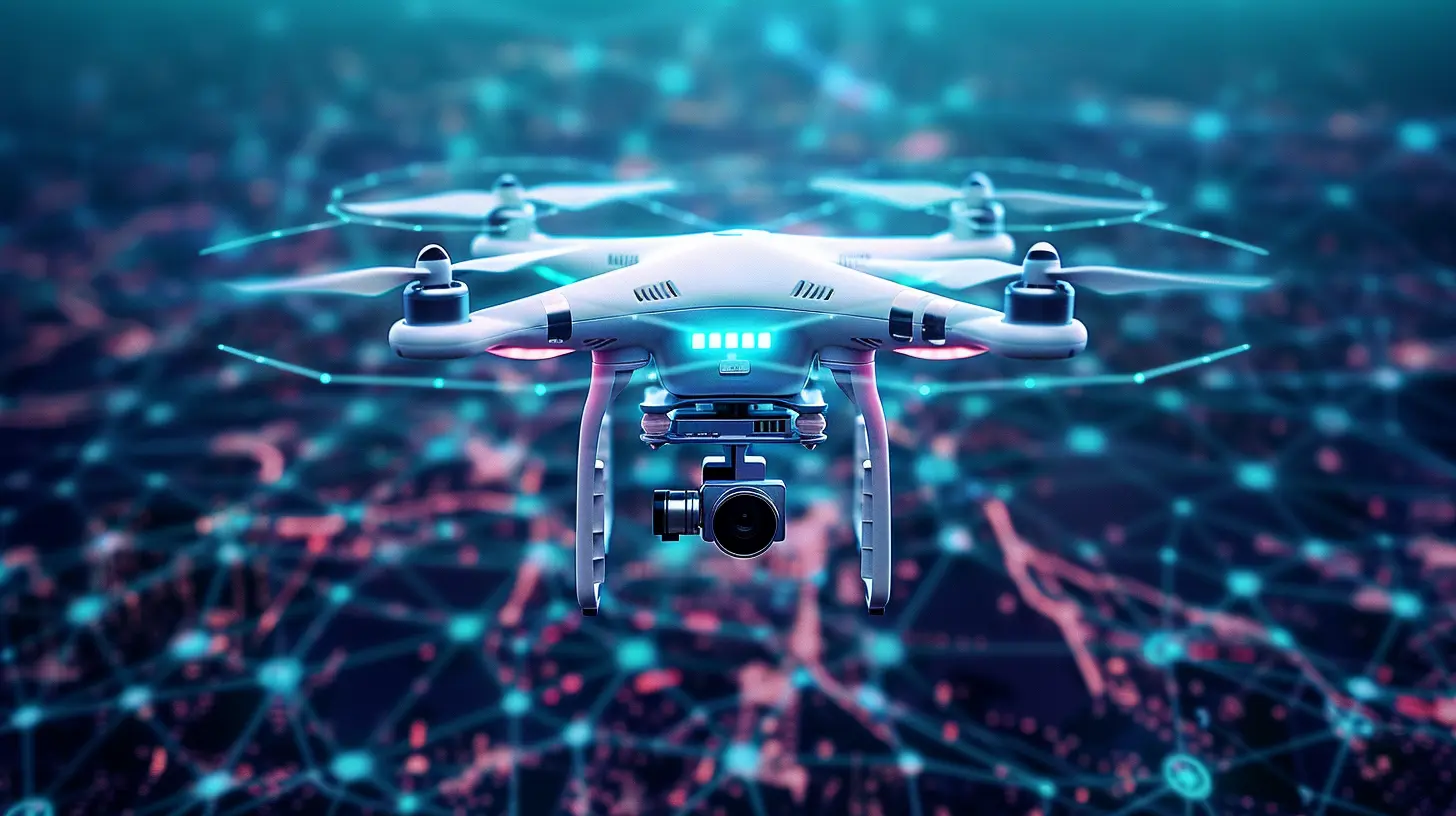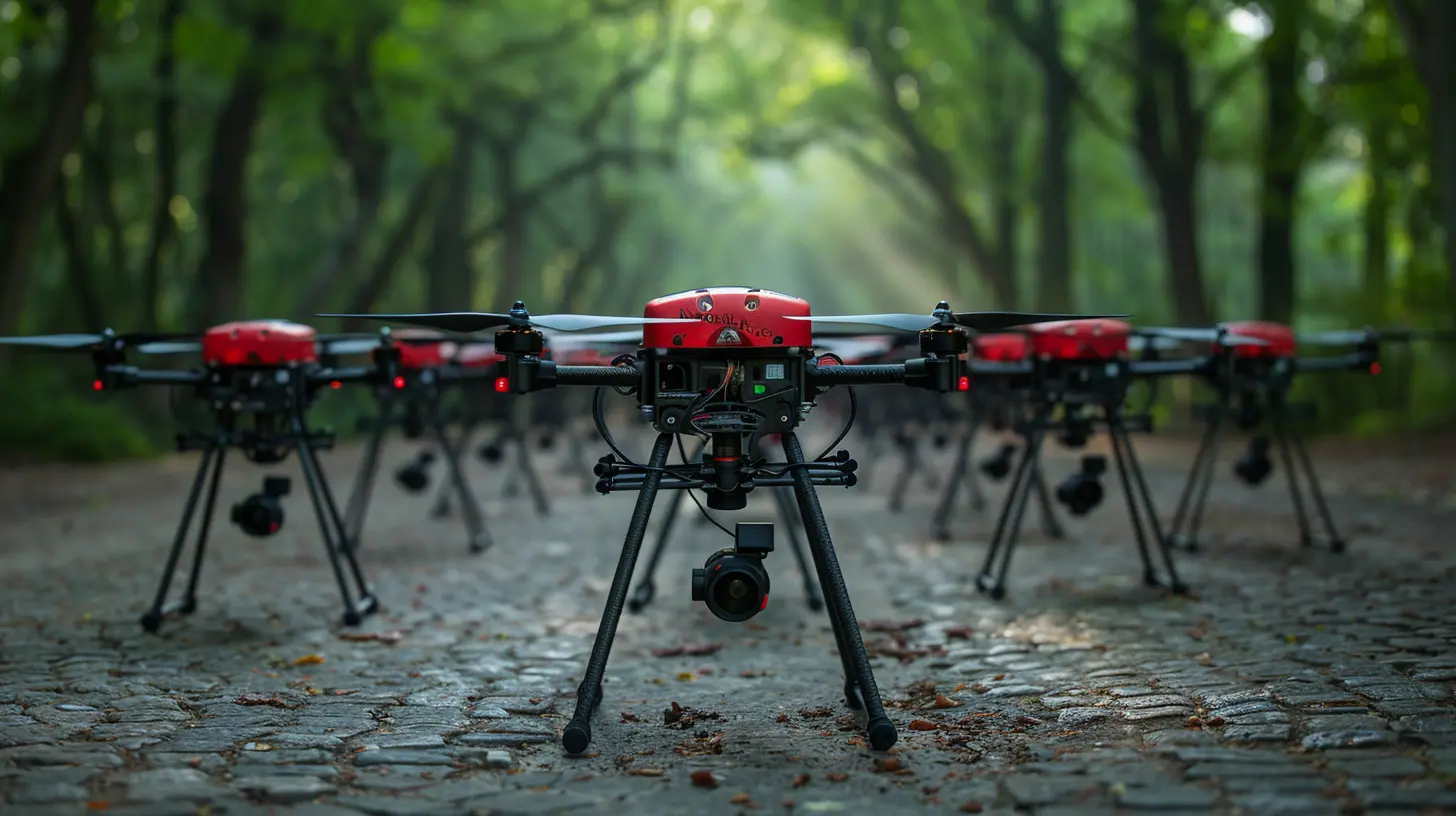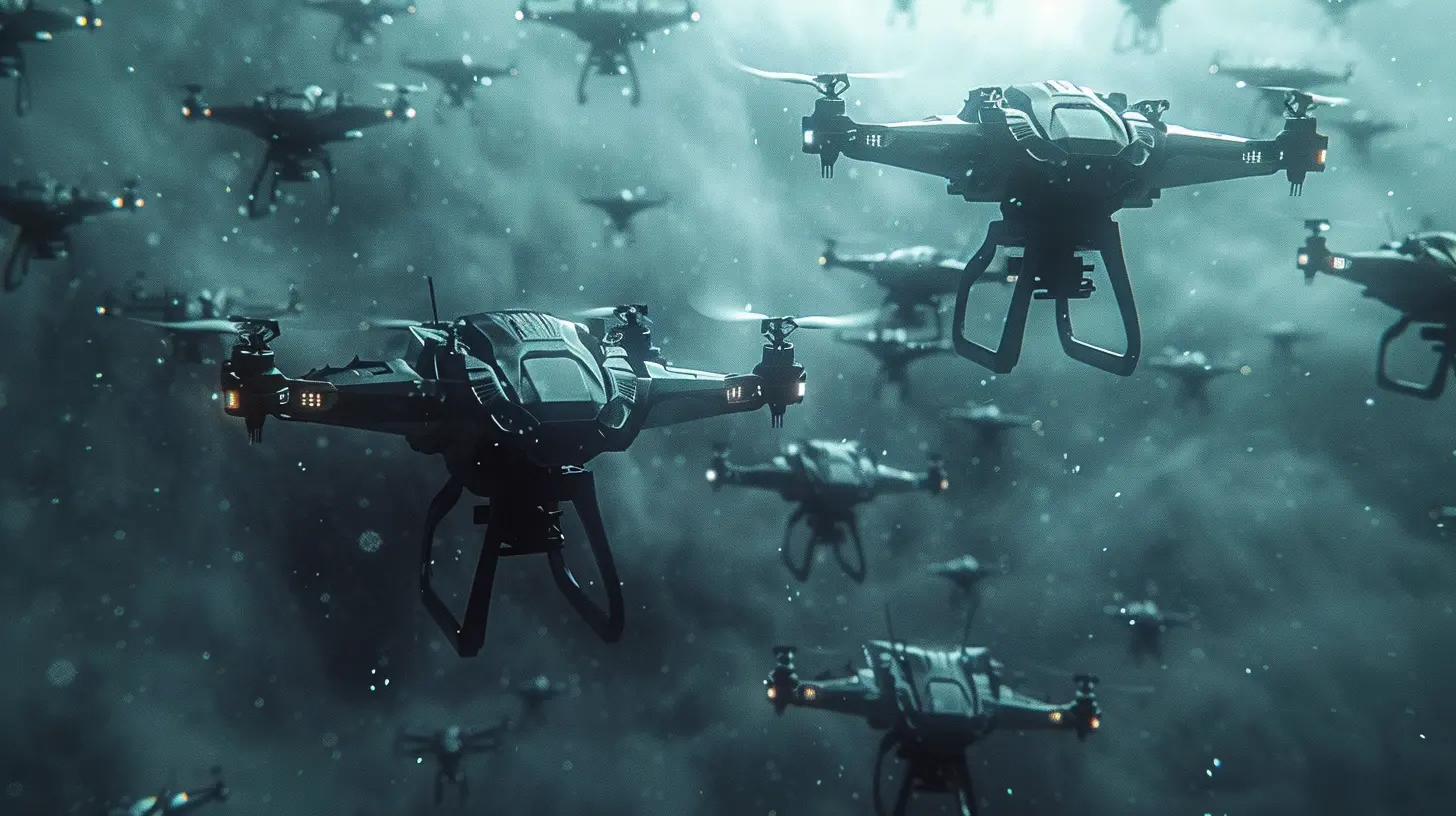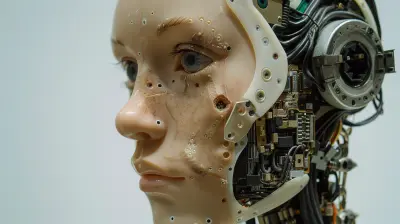Drone Swarms: The Future of Coordinated Aerial Systems
27 October 2025
Let’s talk about drones. They’re no longer just buzzing toys for hobbyists or tools for aerial photography. Drones have officially entered a new era—welcome to the fascinating world of drone swarms.
Now, if you're imagining a sci-fi scene with hundreds of tiny flying robots dancing in the sky like a synchronized ballet, you're not too far off. But here's the kicker: this isn’t science fiction anymore. This is real. It’s happening now, and it’s changing everything from military operations to agriculture, disaster response, and even entertainment.
So, buckle up as we go deep into how drone swarms are shaping the future of coordinated aerial systems—and why you should care.
What Exactly Is a Drone Swarm?
First things first—what are we even talking about?A drone swarm is a group of drones that operate together, often autonomously, to complete a task or mission. Think of it like a flock of birds that move in perfect formation or a school of fish that instinctively change direction together. Except these aren't animals acting on instinct—they’re machines running complex algorithms and communicating with each other in real-time.
What sets them apart from single-drone operations is that swarm drones don’t just fly together—they work together. They share data, make decisions collectively, and adjust their behavior based on what's happening around them.
It’s not one drone doing a job; it’s many drones accomplishing a mission more efficiently and effectively than any solo flyer could ever manage.
The Tech Behind the Swarm
Okay, so this sounds cool, but how does it actually work?At the core of drone swarms is something called distributed intelligence. Instead of one central brain controlling everything (like an air traffic controller), each drone has its own brain. These mini “brains” communicate with the others to make group decisions.
This is achieved using several technologies:
- AI and Machine Learning: Each drone uses AI to process information and make on-the-fly decisions.
- Communication Networks: Think Wi-Fi, 5G, or even specialized mesh networks that allow drones to talk to each other.
- Sensors and GPS: These allow drones to know where they are, what’s around them, and where their partners are flying.
- Edge Computing: Processing data right there on the drone instead of relying on a central server makes the system faster and more responsive.
In simple terms, this is like giving every drone a walkie-talkie, a GPS, a camera, and a brain that can learn. Then you set them loose with a goal and let them figure it out together.
Why Drone Swarms Are a Game-Changer
Now you might be thinking, “Why not just use one super-advanced drone instead of a whole group?” Good question.Here’s why swarms are better in many scenarios:
1. Redundancy and Resilience
If one drone fails, the rest keep going. In a solo drone setup, failure often means mission over. But with swarms, it's like a relay team—if one drops the baton, another picks it up.2. Efficiency and Coverage
Multiple drones can cover a large area quicker. Want to scan a massive forest for signs of wildfire? A swarm can divide and conquer in a fraction of the time.3. Cost-Effective
Instead of relying on one huge, expensive UAV, you can deploy a network of smaller, cheaper drones. Lose one? No sweat. The rest adapt and carry on.4. Real-Time Collaboration
Swarms adapt on the fly. If conditions change—say weather goes rogue or obstacles appear—they can adjust course without waiting for human instructions.
Real-World Applications of Drone Swarms
Alright, enough theory. Let’s talk real-world meat and potatoes—where are drone swarms actually being used?1. Military and Defense
No surprise—militaries around the world are investing heavily in drone swarm technology. These swarms can be used for surveillance, reconnaissance, and even offensive strikes.Unlike traditional systems, swarms can overwhelm defenses, adapt in real time, and complete missions that would be too dangerous or complex for manned units or solo drones.
Think of it like the difference between sending in one ninja versus a hundred highly coordinated ones.
2. Search and Rescue
In natural disaster zones, time saves lives. Drone swarms can quickly map an area, identify survivors using thermal imaging, and even deliver supplies.In conditions where it's too dangerous for humans—like collapsed buildings or wildfire hotspots—drones can fly in, assess risks, and guide rescue teams safely.
3. Agriculture and Crop Monitoring
Farmers, meet your new best friends. Swarming drones can monitor crops, detect diseases, and even spray pesticides with pinpoint accuracy.Imagine hundreds of drones sweeping over a field like a flock of robotic crows—but instead of pecking corn, they’re improving yield and reducing waste.
4. Environmental Monitoring
Want to track how fast a glacier is melting or how coral reefs are changing? A drone swarm can gather more data, faster, and with less human involvement than traditional methods.Plus, their bird’s-eye viewpoint gives scientists clearer insights into large ecosystems over time.
5. Entertainment and Light Shows
You’ve probably seen those incredible drone light shows—hundreds of drones forming shapes, dancing to music, and creating insane visuals.That’s a commercial use of drone swarms in action. And it's not just cooler fireworks—it’s a whole new kind of performance art.
Challenges Holding Swarms Back (For Now)
Let’s be real for a second. It’s not all smooth flying.Flying swarms of drones isn’t as simple as flipping a switch and watching magic happen. There are still a bunch of serious challenges.
1. Regulation and Airspace Control
Who “owns” the air? That’s a hard one. Drones are already hard to track. Swarms make it even trickier.Governments and aviation authorities are still figuring out how to safely integrate drone swarms into airspace without causing chaos.
2. Security Risks
What happens if someone hacks into a drone swarm? Yeah, not great. Especially if that swarm is being used for sensitive missions.Cybersecurity is a huge concern here, and developers have to stay one step ahead of potential threats.
3. Battery Life and Range
Most drones still struggle with lasting longer than 30 minutes in the sky. Swarms are no exception. Without solid battery tech, their potential is capped.4. Cost of Coordination Tech
Sure, the individual drones might be cheap, but the software and backend systems to manage swarms can be complex and pricey.The Road Ahead: What’s Next for Drone Swarms?
Despite the hiccups, the future for drone swarms looks ridiculously promising. We’re seeing breakthroughs happen at a rapid pace.- AI is getting better at handling real-time decision-making.
- Battery tech is slowly improving, which means longer missions.
- Regulations are evolving, especially as governments see the benefits.
- Startups and tech giants alike are pouring money into swarm innovation.
Eventually, we’ll likely see swarms become as common as delivery vans or tractors—with roles in nearly every major industry.
And with the arrival of urban air mobility (yes, flying taxis are coming), coordinated aerial systems might be the key to keeping our future skies safe and efficient.
Final Thoughts: We’re Just Getting Started
Drone swarms aren’t just another tech trend—they’re a shift in how we use machines to interact with the world.From saving lives to feeding the planet and creating art in the sky, their possibilities are as limitless as the open air they fly through.
So the next time you hear that buzzing sound above, look up. You might just be witnessing the future of coordinated aerial systems in action.
all images in this post were generated using AI tools
Category:
DronesAuthor:

Adeline Taylor
Discussion
rate this article
1 comments
Tate Brown
Exciting potential in drone swarms, but careful regulation and ethics are essential.
November 3, 2025 at 5:13 AM

Adeline Taylor
Thank you! I completely agree—balancing innovation with responsible regulation and ethical considerations is crucial for the future of drone swarms.


